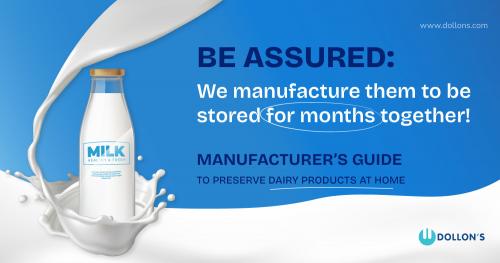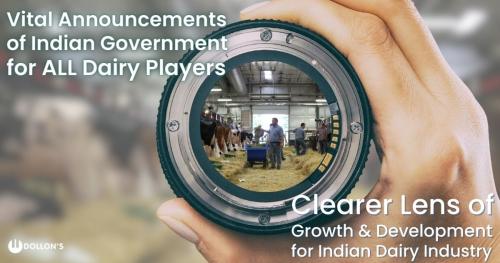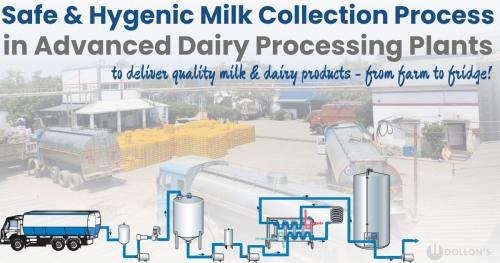Cheese Manufacturing Process in Factories of India

Want to know how the cheese that you love is manufactured in the factory? Then you have landed on the correct page. Irrespective of whether you are having slices or cubes, if you love cheese, take it from us that the basic process of cheese manufacturing is similar for all variants. Let us give you a comprehensive walkthrough of the techniques of production in Cheese Manufacturing Plants.
Being a leading dairy processing plant in India, we understand that although you may have the curiosity to know about the process, yet, too much technical illustration can ward off your interest. Therefore, we have encapsulated the entire process in 6 short points to give you the essence that –
- The cheese that you consume is manufactured in hygienic conditions.
- There is no associated health risk of consuming packaged cheese unless restricted by a medical regime.
- The majority of nutrients that you can receive from milk are well-preserved in cheese as well.
Point 1: Journey from Milk to Cheese…
Cheese, a fermented food product made from milk, is abundant in fat and protein. Its manufacturing process involves separating the milk’s curd from the whey and consolidating it into a solid mass. Notably, there is a retention of fat and casein in the cheese curd during the production, while water-soluble components partition into the whey. The fat content significantly influences the flavor, texture, adhesiveness, and firmness of the cheese. Certain cheese varieties develop a distinct aroma when the fat content in the dry matter reaches at least 40-50%. Characteristics of the milk used and the cheese-making conditions primarily determine the nutritional value of cheese.
Point 2: Disinfected and Clean equipment shapes your Cheese!
In cheese production, the necessary technology and equipment encompass a cheese vat, a kettle for heating, a cheese press and hoops, a packaging machine, and various items like a wax heater and a cheese mill.
Point 3: Hygienic process to craft your favorite Cheese!
The manufacturing process for natural cheese involves milk standardization, pasteurization, starter addition, renneting, cutting, cooking, whey drainage, cheddaring and milling, salting, molding, paraffining/packaging, and ripening. This process in cheese manufacturing plants involves receiving raw cheese, selection for blending, cleaning, and grinding, the addition of water and emulsifiers, heat processing, packaging, cooling, and storage.
Point 4: This makes your Cheese safe for Consumption –
As per the Food Safety and Standards Regulations (FSSAI), cheese is classified as a ripened or unripened product. However, there can be variations in textures, including soft, semi-hard, hard, and extra hard. The whey protein to casein ratio in cheese must not exceed the same ratio in milk. Cheese comes from the coagulation of milk or milk products using non-animal rennet or suitable coagulating agents. Following coagulation, the resulting whey is partially drained. The cheese may contain starter cultures, harmless microorganisms, enzymes, and sodium chloride. Cheese comes in various forms, such as blocks, slices, cuts, shreds, or gratings.
What is the Market Response to Cheese in India?
In India, the cheese market is expanding. It is due to changing food preferences and the expansion of food service establishments such as Pizza Hut and Domino’s. The Indian fast-food business is a significant contributor to the cheese industry. Furthermore, cheese enhances the taste of popular fast-food items like pizzas, burgers, garlic breads, and sandwiches. Cheese also acts as a flavor enhancer in traditional Indian cuisine.
Government efforts, which include support in setting up of cheese manufacturing plants, and rising disposable incomes are contributing to the expansion of the cheese industry in India. Processed cheese dominates the cheese market greatly. Major cheese producers in India include Amul, Britannia, Gowardhan, Milky Mist, and Mother Dairy. The consumption of cheese is greatest in large cities like Delhi, Mumbai, Chennai, and Kolkata, and there is also a rising demand for natural cheese.
The Bottom Line
When considering your favorite cheese, taste is undoubtedly of utmost importance. However, it’s equally crucial to be aware of what you’re consuming and its safety. To stay informed, we encourage you to visit our blog regularly. You’ll find a wealth of intriguing articles related to milk, dairy products, and the industry as a whole.









Comments